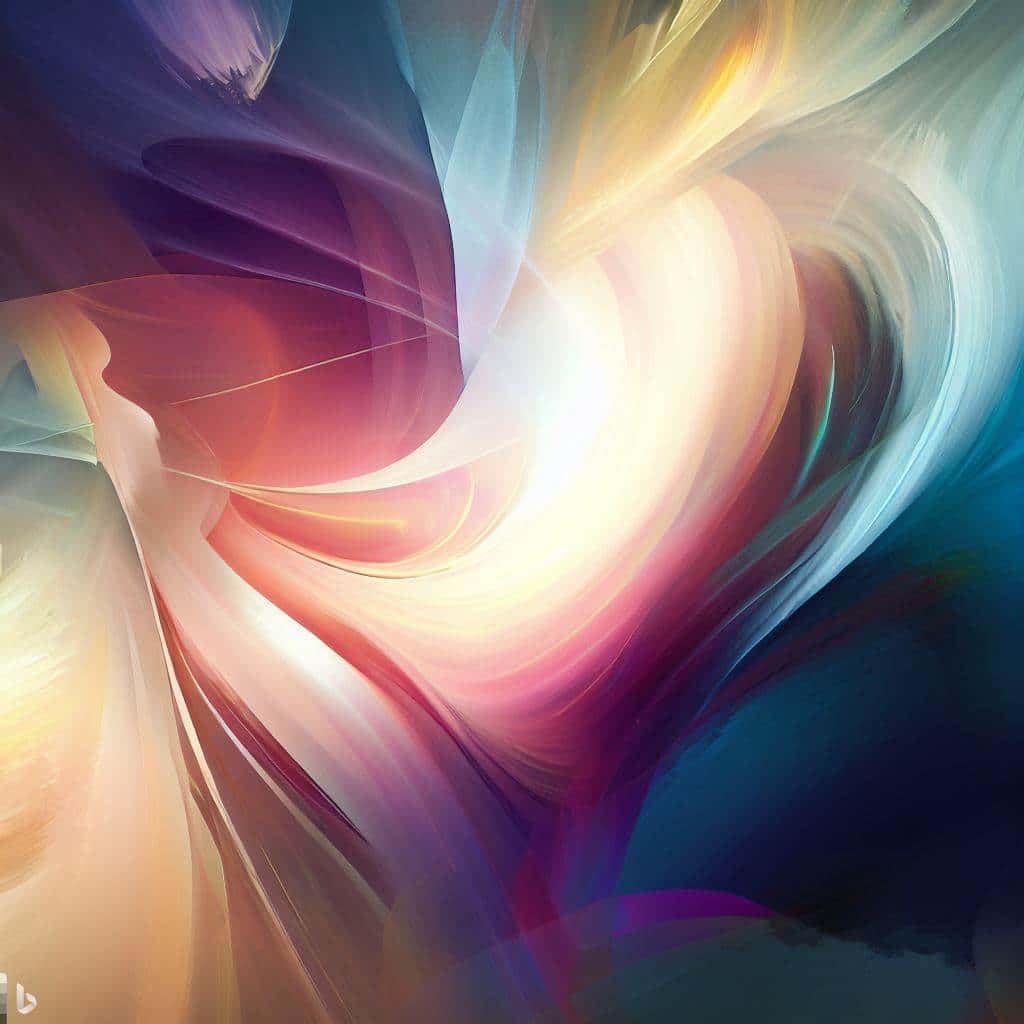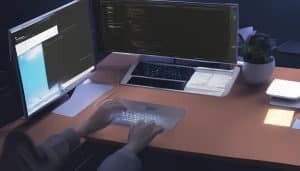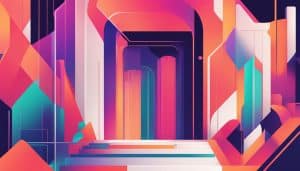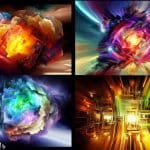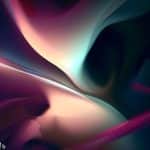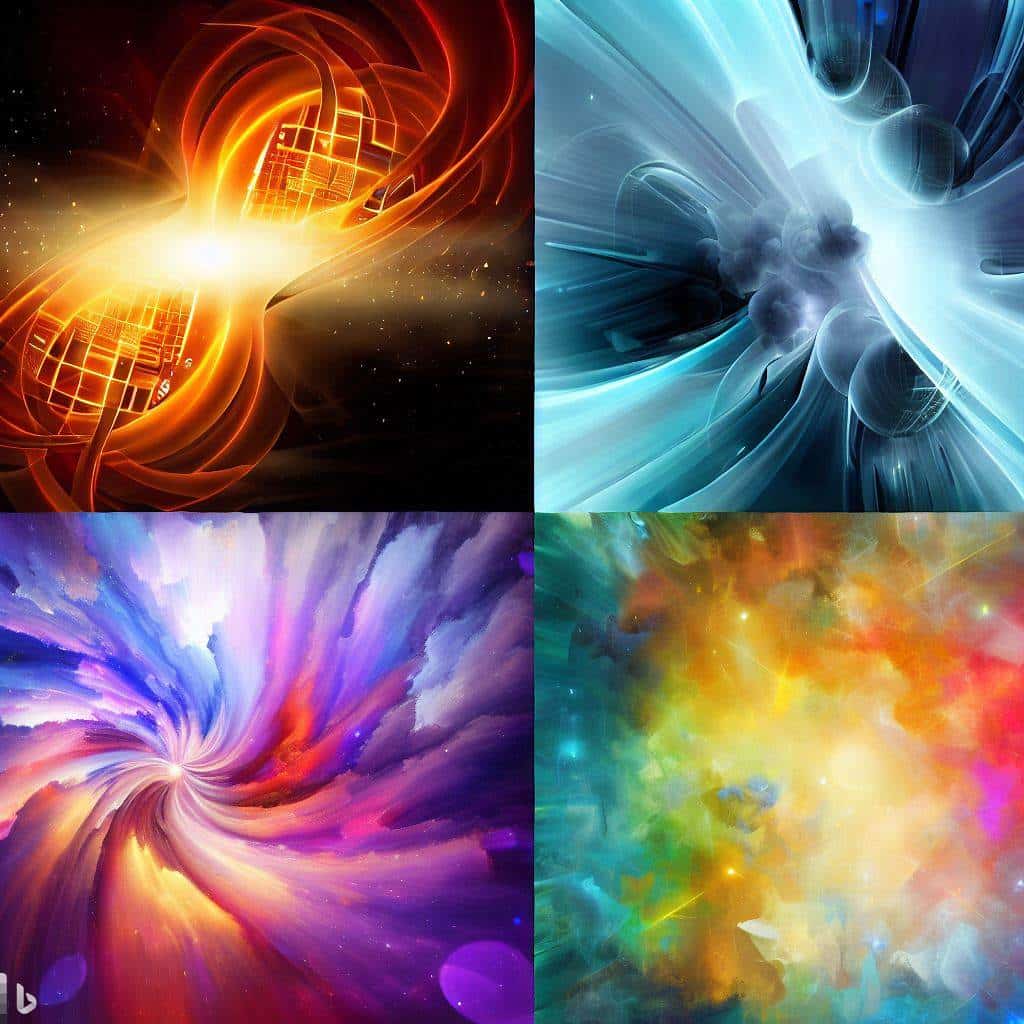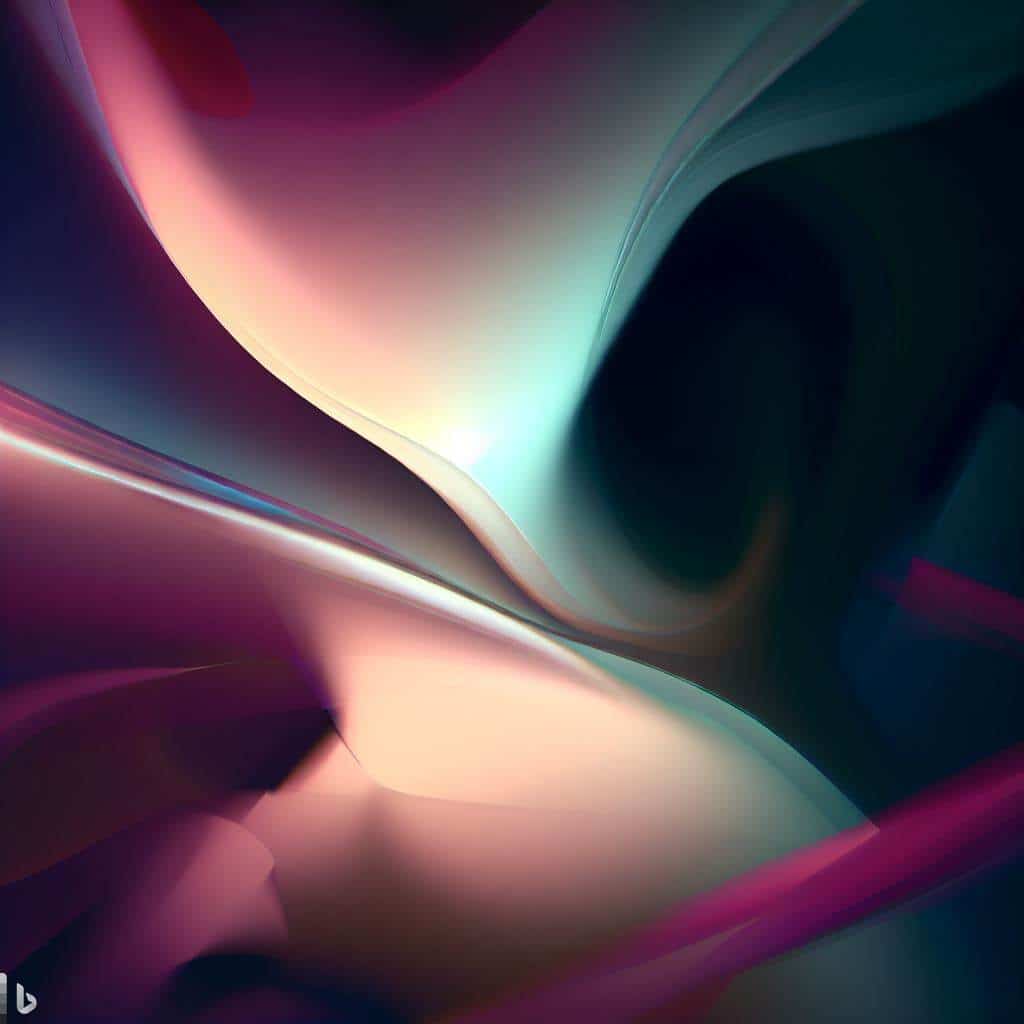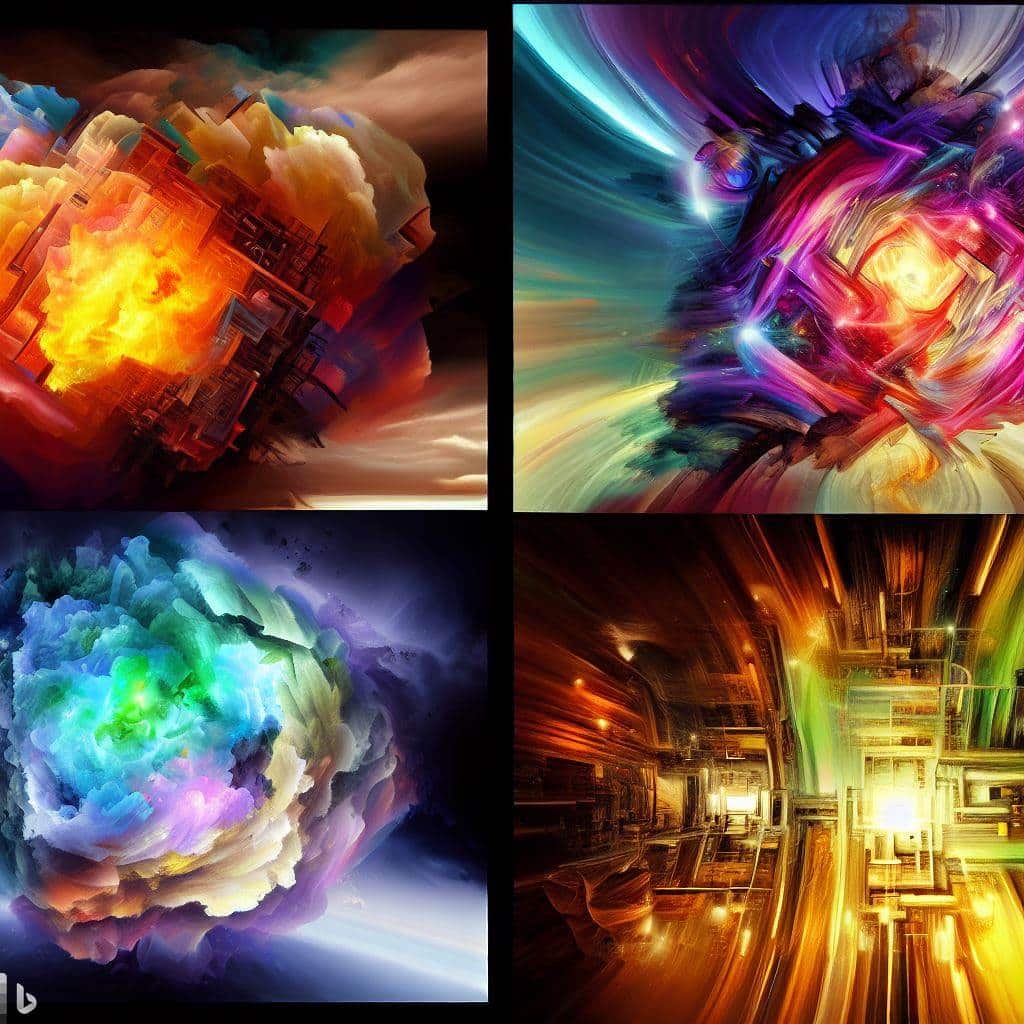Introduction to Generative Art
Generative art, created using computer-generated algorithms, has become popular amongst programmers who use languages like Python or R. This process is complex and multi-faceted, involving mathematical equations, algorithms, and visual design aesthetics. Python contains libraries specifically designed for graphic visuals, permitting the potential for abstract and random patterns.
Generative art is unique in its ability to produce visual outputs based on the data given. For example, a programmer could use tweets or social media feeds to create an interactive visualization of user sentiments.
If you’re interested in generative art, there are plenty of resources online. Joining online communities or taking online classes can help you learn about this field. Don’t miss out on this opportunity to expand your programming knowledge and express your creative side with the power of generative art. Choose carefully, just like a Jedi would select their lightsaber, as the language you choose is paramount for creating generative art.
Choosing the Right Programming Language
To choose the right programming language for generating art, you need to understand the benefits of each language. You can create generative art using Python and its libraries, or R and its packages. In this section, we will discuss how these programming languages can be solutions for generative art, along with their sub-sections.
Python and its Libraries for Generative Art
Python Programming Language: Perfect for Interactive Digital Art!
Python is a great tool for creating generative art. It’s easy to learn syntax, powerful libraries, and vast support community make it a top choice.
Plus, its diverse libraries offer functions for:
- Processing.py: 2D/3D animation and image creation
- Pygame: Game development and interface design
- OpenCV: Image processing and computer vision
- Matplotlib: Data visualization
Also, Python supports machine learning algorithms for influencing artwork. For example, you can train neural networks to generate unique patterns and predict user behavior.
Python’s popularity for interactive digital art skyrocketed with the PyWeek competition in 2005. It’s evolved into a global event to showcase the best virtual creations made with Python.
In summary, Python programming language offers developers a wide range of tools specifically for generative art forms. So, get ready to revolutionize your art world with the endless possibilities of Python packages for generative art!
R and its Packages for Generative Art
R Programming language and its packages can be used to create generative art with code. A list of popular R packages is presented in the following table, along with their description and version.
| Package Name | Description | Version |
|---|---|---|
| ggplot2 | Data Visualization | 3.3.5 |
| Cairo | Anti-aliasing drawing device | 1.5-12.4 |
| grid | Graphics System in R | 4.1.0 |
| gganimate | Animation extension to ggplot2 package | 1.0.7 |
The huge R community provides many resources for learning advanced features. Reddit’s DataArt group is a great place to get inspiration and ideas about how others use R for generative art. Participating in hackathons or codathons is also beneficial as it allows interacting with experienced developers globally.
Online tutorials and blogs/articles about generative art are also useful. These resources provide tips on using generative art in domains such as healthcare, finance, and music. Simulation via code can lead to creating something unique.
Using R and its packages for generative art is an exciting way to learn advanced programming concepts. Even algorithms can have a say in this form of art.
Basic Concepts of Generative Art
To understand the basic concepts of generative art with Python or R, embrace the importance of randomness and probability, as well as algorithms and rules. In this section, we’ll explore how you can utilize these two sub-sections to create unique and intricate generative art using programming languages like Python or R.
Randomness and Probability
Generative art is unique and unpredictable. Algorithms dictate the elements, placement and composition. Randomness and probability control the outcome. Chaos and structure are balanced to create an aesthetic appeal. To explore generative art further, remember the mathematical principles behind it. Forget rock bands, code your own chaos and harmony!
Algorithms and Rules
Generative Art Creation: The Basics.
Generative art is created by using a set of rules or algorithms which are fed to a computer software. This produces an infinite range of visual outcomes.
Rules & Algorithms:
Table of rules & algorithms relevant to generative art:
| Rules | Algorithms |
|---|---|
| Arrangement | Iteration |
| Color | Selection |
| Scale | Randomization |
Generative Art: Further Insights
Generative art stands out due to the creation process. It uses simple applications to produce complex visuals. Artists can create visually attractive art while still being in control.
A Real-Life Example
A famous artist used computational art techniques when he struggled to find inspiration for his work. His algorithmic images quickly gained attention from fans, becoming an important part of his creative journey and empowering him with greater skills.
Are you ready to explore the wondrous world of generative art with Python?
Creating Generative Art using Python
To create generative art using programming languages like Python or R, you need to learn the basics of programming. In this section, we will show you how to create generative art using Python. We will begin with setting up your environment and tools, followed by the basics of Python programming for generative art. Finally, we will provide you with examples and tutorials for generating art using Python.
Setting up Environment and Tools
To create generative art with Python, you need to prep the environment and tools. Here’s a four-step guide:
- Install Anaconda or similar Python distribution
- Install PIP for package installation
- Install packages like NumPy, Matplotlib, Pillow
- Choose an IDE e.g. Visual Studio Code or PyCharm
Different artists might use other tools. Pick an IDE wisely, considering functionality, user-friendliness, and accessibility.
Generative art has been around since the ’60s. Artists like Vera Molnar used equations and math principles. Now, programming languages like Python take it to the next level. Ready to start your artistic journey? Grab your Python brush!
Basics of Python Programming for Generative Art
Programming with Python is key to creating generative art. Python has lots of libraries and modules that make it easier. Knowing the basics of Python helps you make intricate patterns, animations and graphics.
It is important to start with Python syntax. This gives you a strong foundation to build on. Object-oriented programming (OOP) lets you make reusable code.
To begin, use simple shapes and designs. Libraries like NumPy and Matplotlib help with data visualization.
Practice and experiment. Change variables and parameters. See what others have done for inspiration.
In short, Python offers lots of ways to make generative art. Learn the basics, OOP concepts and try different things. Unleash your inner artist with Python!
Examples and Tutorials for Generating Art using Python
Unlock the power of Python for creating art! Learn the art of Generative Art with Examples and Tutorials. Key Points:
- Basics of Generative Art
- Algorithms, Graphics Libraries and Coding Techniques
- Create abstract art with Python
- Connect with a community of artists and coders
- Develop your skills as an artist with Python
Did you know? Professional artists now use generative art in their work. The Henry Moore Institute held an exhibition called “The Infinite Line” in 2019.
Further Resources: StackExchange and GitHub. Ready to take your generative art to the next level with R? Let’s code some beauty!
Creating Generative Art using R
To create generative art using R, you need to set up the environment and tools first. Basics of R programming for generative art should be considered to create unique art pieces. This section will provide you with examples and tutorials to generate art using R.
Setting up Environment and Tools
Ready to get creative with R? Here are the steps to prepare your environment:
- Install the R programming language.
- Choose a code editor, e.g. Sublime Text, Vim/NeoVim, Atom.
- Install the RStudio IDE for extra features and tools.
- Get packages like ggplot2, grid, lattice and Cairo for generating art.
- Set up a practice environment without changing the release version.
- Test and run a basic example to check it’s all working.
Remember, there’s no single right way to set up your R art environment – it’s all about individual preferences.
When downloading packages from CRAN, make sure you get stable releases available worldwide with no geographical issues. DataCamp.com states that any query for an R package could suffer packet loss due to remote locations.
So, there you have it – you don’t need to be a coding genius to create art with R, but it helps to understand the basics!
Basics of R Programming for Generative Art
Want to create visual art using code? Here’s a rundown of how to get started with R Programming for Generative Art:
- Install the necessary libraries, such as ggplot2 and Cairo.
- Create shapes and modify them using mathematical functions.
- Enhance your work with colour, opacity, and other elements.
To stand out, experiment and make custom functions that fit your vision.
The possibilities with generative art are endless – so don’t be afraid to explore!
Take data science to the next level and express yourself through generative art. Try it today! Get inspired with these R-generating tutorials and discover your inner artist.
Examples and Tutorials for Generating Art using R
R programming language has been gaining popularity when it comes to creating art. There are plenty of tutorials and examples out there for art fans to get inspired.
Making generative art involves writing code and understanding design concepts to produce gorgeous visuals. It may start with basic shapes or patterns, and further developing into more complicated algorithms like fractals, recursive graphics or even fluid dynamics simulations. More advanced ways include integrating libraries such as ‘ggplot2‘ and ‘plotly‘, or using natural language processing for image generation. You can also experiment with sound inputs to generate mesmerising art.
Pro Tip: Generative art takes time, patience, curiosity, and a willingness to learn. It can take a while to get the hang of it, but the excitement builds as your code generates beautiful images! So go ahead and learn some advanced skills to make your generative art game stronger, just don’t blame me if your creations take over the world.
Advanced Concepts and Techniques
To dive into the advanced concepts and techniques of generative art with programming languages like Python or R, we can explore Markov Chains and Fractals, as well as how to create interactive generative art. By understanding these sub-sections, you can take your generative art to a whole new level with sophisticated techniques and interaction.
Markov Chains and Fractals
Probabilistic Automata, a branch of maths, changes behavior due to random happenings. Markov Chains and Fractals are two subsets of this.
A Table showing the differences between them:
| Features | Markov Chains | Fractals |
|---|---|---|
| Regularity | Present | Absent |
| Self-Similarity | Absent | Present |
| Methodology | Predictive | Descriptive |
This is often used to make simulations in many areas like physics, biology, and maths. Plus, understanding how they work together leads to building lifelike structures.
A pro tip: use these for making graphical representations of complex data. If Picasso had Python or R, he would have drawn with code instead of a brush!
Interactive Generative Art using Python or R
Interactive visuals are a captivating way to express generative art with Python or R. You can make visually attractive, interactive presentations with these programming languages. They provide an imaginative way to show art to many people.
To use Python or R for Interactive Generative Art, here are 4 steps:
- Choose a canvas. Decide where you want to display your artwork. It could be on the web, dashboard, or any digital format.
- Code your visualization. Use Python or R snippets to build your piece. Apply mathematical functions, shapes, colours, and animations to make it special.
- Add interaction. Let the audience change visual aspects like colour, size, shape and more by adding buttons, sliders, and drop-down menus.
- Publish your work. When the layout is done, show it on websites so others can view and explore it.
Interactive generative art lets users take part in creative pursuits. Prominent digital artists use Python or R code libraries to create one-of-a-kind experiences.
Experts predict that interactive generative art will continue to advance with software improvements. This blend of computer science and artistic expression opens up new possibilities for creativity.
Famous artists who have done Interactive Generative Art with Python or R include Joshua Davis – Immersion 7 (2002), Golan Levin – Yellowtail (2003) & Cuddlefish (2004).
You’ve learned the advanced concepts and techniques. Now go out and show your knowledge to your colleagues, or just use it to amaze strangers at parties.
Conclusion and Next Steps.
To make one’s own unique pieces of generative art, explore the coding languages such as Python or R. Understand the basics of generative art and coding. Use libraries like Pygame or Processing to create visuals and animations. Play around with different algorithms and parameters to change the appearance of the creation.
Advanced steps include machine learning algorithms to create complex and dynamic artworks. Share the artwork on online communities to get feedback and collaborate with other artists for better skills.
Generative art started in the 1960s with John Whitney and Vera Molnar using computers to form geometric shapes and patterns. Nowadays, with improved technology, generative art has developed and captivates viewers with its intricate designs.
Q: What is generative art?
A: Generative art is artwork created using programming languages like Python or R that involves the use of mathematical formulas, algorithms, and randomness to create images that are both unique and unpredictable. It allows the artist to explore a wide range of possibilities and create something entirely different from what they may have imagined before.
Q: What programming languages are commonly used for generative art?
A: Programming languages that are commonly used for generative art are Python and R. Python has a variety of libraries like Pillow, which can create images pixel by pixel while R can create generative art using functions such as noise().
Q: What is a pixel and how is it used in generative art?
A: A pixel is the smallest unit of an image and is used in generative art to create images through the combination of individual pixels into a set of coordinated values. The process can involve various mathematical formulas to assign values to each pixel by defining its color, brightness, and position on the screen.
Q: Can generative art projects be printed for gallery or personal use?
A: Yes, generative art projects can be printed for gallery or personal use as long as the resolution is high enough. This can be achieved by setting the dimensions of the image before it is created so that the final product appears sharp and detailed when printed.
Q: What are some commonly used functions in creating generative art?
A: Some commonly used functions in creating generative art are noise(), map(), subset(), and an iterative process for generating a field of square blocks or a complex algorithmic work that lets various artifacts come to life.
Q: What is the importance of randomness in generative art?
A: The usage of randomness adds to the unpredictability and complexity of generative art, creating unique and varying results with each implementation.
Q: What is the difference between top left and top right placement of the artwork?
A: The difference between the placement of artwork in the top-left and top-right is simply a matter of the starting coordinate. Both placements, however, still follow the same mathematical formulas and algorithms that can produce entirely different results.
Q: What is the best way to begin creating with Python or R?
A: The best way to begin creating with Python or R is to start with simple projects to familiarize yourself with the functions used for generating images. Then as you become more confident with your skills, you can explore more complex and visually appealing projects.
Q: Are there any resources available for learning generative art?
A: Yes, there are many resources available for learning generative art. There are online tutorials, blogs, and even interviews with many artists who work in this niche. Furthermore, many examples of generative art code can be easily understood and adapted for use.
Q: How important is complexity in generative art?
A: Complexity in generative art is not the only focus, but it can fascinate both the artist and the viewer. However, the artwork must have predictable results through its predictability through the use of mathematical formulas and artistic intent. Copying other artists’ work is not ideal and the goal is to construct something new with minimum artifact and maximum complexity.
